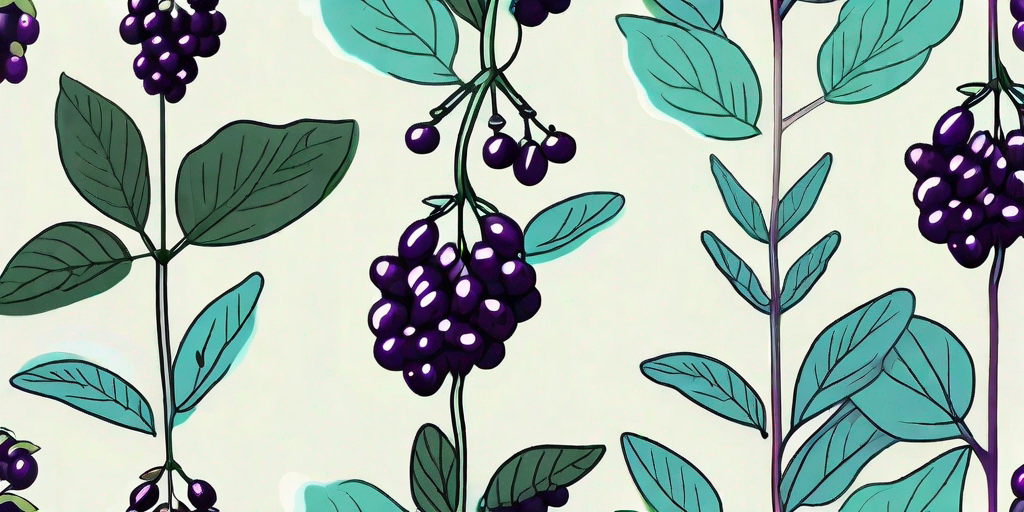
Elderberries, the unsung heroes of the superfood world, are not only packed with antioxidants and vitamins but are also incredibly easy to grow. If you're looking to add a dash of health and a sprinkle of horticultural flair to your life, you've come to the right place. Let's dive into the world of elderberry cultivation, shall we?
The Elderberry: A Brief Introduction
Before we get our hands dirty, let's take a moment to appreciate the elderberry plant. Known scientifically as Sambucus, this plant is a genus of flowering plants in the family Adoxaceae. The berries and flowers of the elderberry are packed with antioxidants and vitamins that can boost your immune system, tame inflammation, lessen stress, and even help protect your heart. How's that for a plant resume?
But wait, there's more! Elderberries are not just good for you, they're also good for the environment. These plants are known to attract pollinators, making them an excellent addition to any eco-friendly garden. Plus, they're pretty easy on the eyes with their delicate clusters of white flowers and deep purple berries.
Getting Started with Elderberry Cultivation
Choosing the Right Elderberry Variety
First things first, you need to choose the right variety of elderberry to plant. There are several varieties available, each with its own unique characteristics. The most common varieties include the American elderberry (Sambucus canadensis), the European elderberry (Sambucus nigra), and the Red elderberry (Sambucus racemosa).
While all elderberries are edible, the American and European varieties are the most commonly used for their medicinal properties. The Red elderberry, on the other hand, is often used for ornamental purposes due to its striking red berries. However, it's important to note that the Red elderberry's berries are only edible when cooked and can be toxic if eaten raw.
Preparing Your Garden
Once you've chosen your elderberry variety, it's time to prepare your garden. Elderberries prefer well-drained soil with a pH between 5.5 and 6.5. They also need plenty of sunlight, so choose a spot in your garden that gets at least six hours of sun each day.
When preparing the soil, make sure to add plenty of organic matter, such as compost or well-rotted manure. This will help improve the soil structure and provide the nutrients your elderberry plants need to thrive.
Planting Your Elderberry Seeds
Now that your garden is prepared, it's time to plant your elderberry seeds. The best time to plant elderberry seeds is in the early spring, once the risk of frost has passed.
Start by soaking your elderberry seeds in water for 24 hours. This will help soften the seed coat and speed up germination. After soaking, plant the seeds about 1/4 inch deep in the soil. Space the seeds about 6 feet apart to give the plants plenty of room to grow.
Caring for Your Elderberry Plants
Watering and Fertilizing
Elderberry plants need regular watering, especially during dry periods. However, be careful not to overwater as this can lead to root rot. A good rule of thumb is to water when the top inch of soil feels dry to the touch.
As for fertilizing, elderberry plants benefit from a balanced fertilizer applied in the early spring. Avoid high-nitrogen fertilizers as these can lead to excessive foliage growth at the expense of fruit production.
Pruning and Harvesting
Pruning is an important part of elderberry care. Not only does it help maintain the shape and size of the plant, but it also encourages better fruit production. The best time to prune elderberry plants is in the early spring, before new growth begins.
When it comes to harvesting, patience is key. Elderberries are typically ready to harvest in late summer to early fall, when the berries are fully ripe and have a deep purple color. Remember, only the berries are edible - the stems and leaves are toxic and should be avoided.
Frequently Asked Questions
- Are elderberries easy to grow?
Yes, elderberries are relatively easy to grow, making them a great choice for beginner gardeners. They are hardy plants that can tolerate a variety of soil conditions and climates.
- Can I grow elderberries in a pot?
Yes, elderberries can be grown in pots. However, they will need a large pot to accommodate their size and root system.
- How long does it take for elderberry plants to produce fruit?
Elderberry plants typically start producing fruit in their second or third year. However, they reach peak production in their fourth or fifth year.
Conclusion
And there you have it, folks! A comprehensive guide to growing elderberries, from seed to superfood. With a bit of patience and care, you'll soon have a garden full of these health-boosting plants. So why wait? Start your elderberry cultivation journey today and reap the benefits of this amazing superfood.
Remember, gardening is not just about the end result. It's about the joy of nurturing a seed into a plant, the satisfaction of a successful harvest, and the pleasure of knowing that you're contributing to a healthier planet. So get out there, get your hands dirty, and most importantly, have fun!











